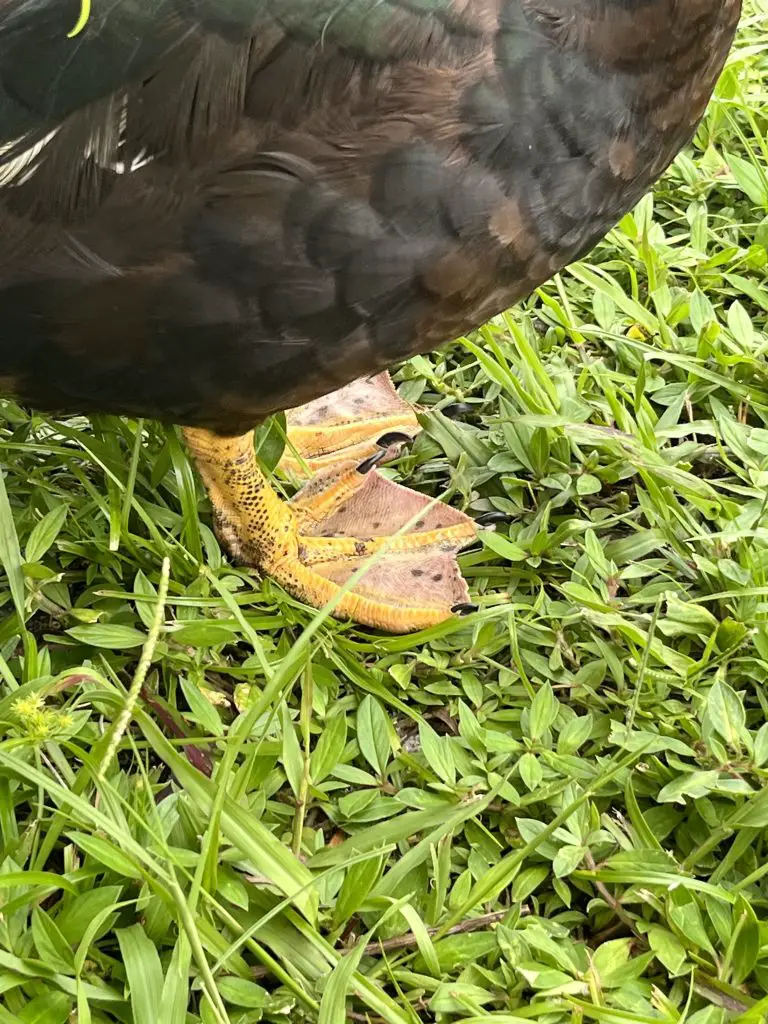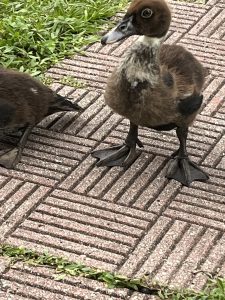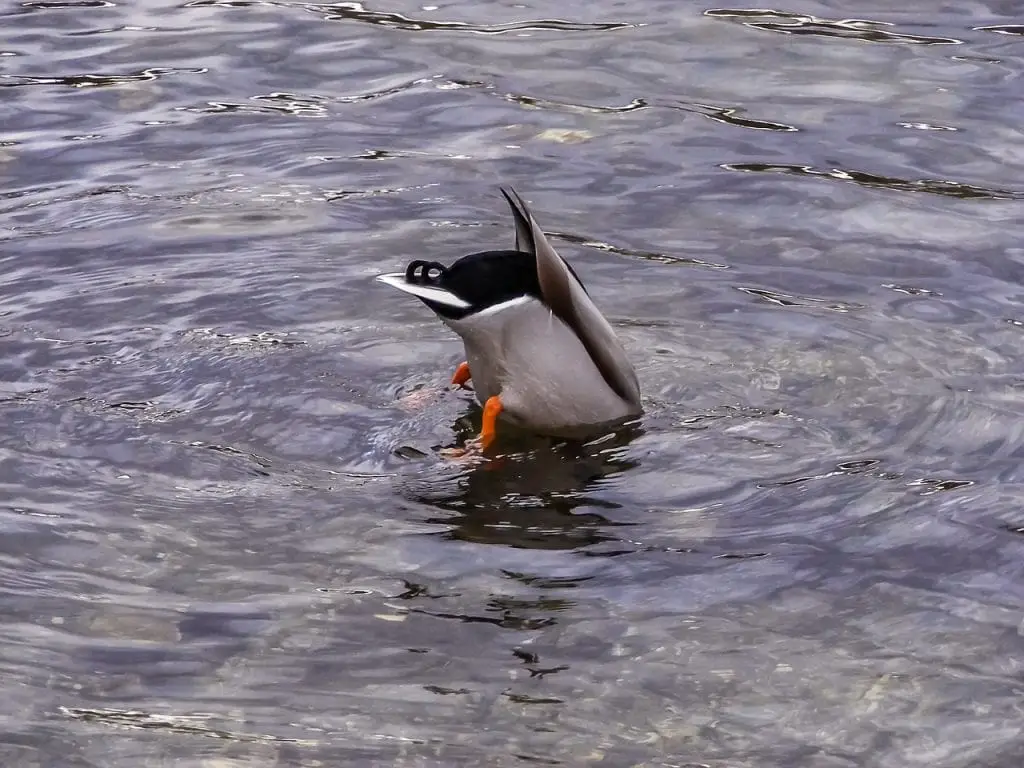When you see a duck waddling along, one of the first things you might notice is its feet. Many ducks have brightly colored feet that draw your attention toward the oddly-shaped structures. Ducks feet, called palmate, get their name from the Latin word ‘palmatus’ which means ‘palmate’ in English. In plain English, palmate means ‘resembling a hand with the fingers spread.’
Today I’ll share everything you’ve ever wanted to know (or didn’t know you wanted to know) about ducks feet.
Key facts about ducks’ feet:
- Ducks feet are considered palmate, which is the most common type of webbed foot.
- Ducks feet include four toes, three of which are connected by webbing.
Facts About Ducks Feet

Ducks utilize their remarkable feet in a variety of ways. With their webbed toes, waterfowl are adept swimmers, propelling themselves through water by paddling their feet. The webbing creates resistance against the water, allowing them to generate forward motion with each stroke. This specialized feature enables ducks to navigate lakes, ponds, and rivers with remarkable ease and agility.
In addition to swimming, waterfowl also employ their feet for walking on land. Their webbing can fold back, making it more manageable to traverse solid ground. The sharp claws at the end of their feet provide them with a secure grip, whether it’s perching on branches or climbing riverbanks.
Furthermore, these critters utilize their feet for grooming and maintenance. They use their sensitive nerve endings on their feet to preen their feathers, ensuring they remain clean, aligned, and waterproof. By spreading oil from their glands onto their feet, ducks provide a protective coating that helps keep their feet from waterlogging and maintains their buoyancy.
How are Ducks’ Feet Unique?

Ducks’ feet are called palmate. But what is palmate? It’s a description of how the waterfowl’s foot is structured. The foot is considered palmate when it includes three front facing toes joined by webbing and the webbing doesn’t include a fourth back toe. The unwebbed back toe is small and raised, it’s called the hallux.
Below is a helpful breakdown of some facts about these unique strcutures:
Ducks don’t get cold feet
Ducks have a specialized circulatory system called “countercurrent circulation” that helps keep their feet warm even in icy water. Warm blood from the body flows into the feet, while cold blood returning from the feet flows close to the warm blood, which helps maintain heat.
Ducks rely on their feet while swimming
Waterfowl have webbed feet, which means their toes are connected by a membrane. This unique adaptation helps them swim efficiently by providing a larger surface area for paddling through the water.
Ducks can get around on land just fine
Ducks are known for their swimming abilities. But they can also use their feet to get around on land. Their webbing can fold back, allowing them to walk more easily on solid ground.
Ducks have sharp claws at the end of their feet, which help them grip surfaces while swimming and walking on land. These claws are particularly useful for perching on branches or climbing riverbanks.
Feet in Use While Foraging

Waterfowl utilize their feet skillfully when foraging for food. With their webbed feet, they paddle through shallow waters, creating small waves that disturb the bottom and expose aquatic vegetation, insects, and small invertebrates. This method, known as “dabbling,” allows ducks to reach food sources near the surface without fully submerging themselves. As they paddle, their feet act as rudders, helping them maneuver swiftly through the water and maintain balance.
Additionally, these critters employ their feet to filter through the soft mud or sediment at the bottom of bodies of water. They walk along the muddy substrate, constantly probing and sifting through it using their sensitive bills. By pushing their feet forward and backwards, they stir up the sediment and uncover buried organisms, such as worms, mollusks, and insect larvae, which they promptly capture and consume. This combination of foot movement and bill dexterity enables ducks to efficiently search for food in a variety of aquatic habitats.
Moreover, diving ducks take advantage of their specialized foot structure for deeper foraging. Equipped with fully webbed feet that extend to the tips of their toes, these creatures propel themselves underwater by vigorous paddling. Their feet function as powerful propellers, providing the necessary force to dive and swim after prey. This adaptation allows diving ducks to reach greater depths and pursue aquatic creatures like fish, crustaceans, and mollusks, which they capture and consume while submerged.
Frequently Asked Questions
You have questions. I have answers.
What are ducks feet called?
Ducks’ feet are called palmate.
Why do ducks sit on one foot?
Ducks often sit on one foot as a way to conserve body heat. By tucking one leg up close to their body, they reduce the amount of exposed surface area, minimizing heat loss. This behavior is especially crucial during colder weather when ducks need to regulate their body temperature to stay warm.
Final Take
Ducks rely heavily on their feet to make their way in the world. Now that you know more about duck feet, do you appreciate these wonderful waddlers more?